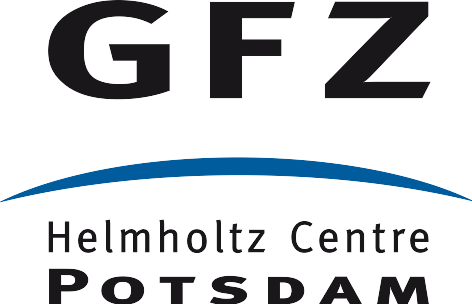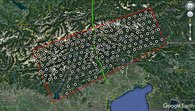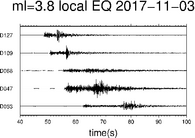The DFG-Priority Programme "4D-MB - Mountain Building Processes in 4-Dimensions" (SPP 2017) forms an integral part of the international AlpArray mission to image the structure of the European Alps from their surface down to several hundred kilometers depth in the mantle. It tests the hypothesis that re-organizations of Earth’s mantle during the collision of tectonic plates have both immediate and long-lasting effects on crustal motion, fault kinematics, earthquake distribution and surface evolution. Within this programme we work on 4 sub-projects.
further link: www.alparray.ethz.ch/en/home/
A dense seismological network in the central and southern Alps
This project is designed to collect and provide seismological data through a dense seismological network in the central and eastern Alps. The 154 densely spaced stations planned here will complement the larger-scale AlpArray Network ("backbone"). SWATH D focuses on a key region of the Alps where the polarity of the subduction may change and where TRANSALP found a jump in the Moho. The data generated in this project are required by 15 individual applications in the SPP; 15 other proposals need products (e.g. tomographic images) resulting therefrom. SWATH D is therefore an important part within the SPP and the international AlpArray community, as well as a scientific service for the majority of the applications in the SPP.
Time frame - July 2017 - September 2019
Coordination - Mark Handy (FU Berlin), Michael Weber (GFZ Potsdam)
Funding - DFG - Deutsche Forschungsgemeinschaft, SPP 2017
Principal Investigators - Michael Weber (GFZ Potsdam), Christian Haberland (GFZ Potsdam), Frederik Tilmann (GFZ Potsdam)
Personnel - Benjamin Heit (GFZ Potsdam), Azam Jozi Najafabadi (GFZ Potsdam)
Project Website - www.spp-mountainbuilding.de/
Cooperations - W. Lenhardt (ZAMG, Vienna), D. Pesaresi (OGS Udine, Italy)
Methods & Equipment - 154 broadband Seismometers - deployed for 2 years (Instruments from the GIPP)
Publications/Results
- Jozi Najafabadi, A., Haberland, C., Ryberg, T., Verwater, V. F., Le Breton, E., Handy, M. R., Weber, M. (2021): Relocation of earthquakes in the southern and eastern Alps (Austria, Italy) recorded by the dense, temporary SWATH-D network using a Markov chain Monte Carlo inversion. - Solid Earth, 12, 5, 1087-1109.
https://doi.org/10.5194/se-12-1087-2021 - Heit, B., Cristiano, L., Haberland, C., Tilmann, F., Pesaresi, D., Jia, Y., Hausmann, H., Hemmleb, S., Haxter, M., Zieke, T., Jäckel, K.-H., Schloemer, A., Weber, M. (2021 online): The SWATH-D Seismological Network in the Eastern Alps. - Seismological Research Letters.
doi.org/10.1785/0220200377 - Weber, M., Handy, M., Kästle, E. (2019): The Alps revisited – 4D‐MB, the German contribution to the AlpArray mission. - Acta Geologica Sinica - English Edition, 93, S1, 18-19. doi.org/10.1111/1755-6724.13909
- Heit, B., Weber, M., Tilmann, F., Haberland, C., Jia, Y., Pesaresi, D. (2017): The Swath-D Seismic Network in Italy and Austria. doi.org/10.14470/MF75626011
Acknowledgment - We thank the GIPP for providing the instruments and our local partners in Austria and Italy for their support in the deployment iof the stations
Seismicity and crustal structure
Linking surface kinematics to deep structure of the Adriatic indenter near a potential subduction-polarity switch, the Giudicarie Belt (Southern Alps)
This seismotectonic study of a transverse zone (Giudicarie Belt) will test the idea that Miocene kinematics at the leading edge of the Adriatic indenter is related to a suspected switch in subduction polarity beneath the Eastern Alps. It challenges conventional notions of uniform-sense subduction of European lithosphere beneath the Alps by attempting to link slab anomalies at the junction of the Central and Eastern Alps with deformation patterns in the crust and at the surface. The object is to trace both active and defunct faults down to lithological, structural and seismological discontinuities in the crust and upper mantle. To map the 3D geometry of faults, we will use data from SWATH D and the AlpArray station network to pinpoint low-magnitude events and to delineate offsets of rock-physical domains (Vp, Vp/Vs, Qp, Qs) by using local earthquake tomography. This will be complimented by state-of-the-art structural and kinematic (fault-slip) analyses of thrust-and-fold zones along 5 lithospheric profiles crossing key parts of the GB and adjacent units of the Southern and Eastern Alps.
Time frame - 2017 - 2019
Funding - Deutsche Forschungsgemeinschaft (DFG)
Principal Investigators - M. Handy (FU Berlin), Christian Haberland (GFZ Potsdam), Eline Le Breton (FU Berlin)
Cooperations - Free University Berlin, other 4D-MB groups, AlpArray community
Project Webpage - www.spp-mountainbuilding.de/
Methods & Equipment - uses the data from SWATH-D
Publications/Results
- Jozi Najafabadi, A., Haberland, C., Le Breton, E., Handy, M. R., Verwater, V. F., Heit, B., Weber, M., the AlpArray and AlpArray SWATH-D Working Groups (2022): Constraints on crustal structure in the vicinity of the Adriatic Indenter (European Alps) from Vp and Vp/Vs Local Earthquake Tomography. - Journal of Geophysical Research: Solid Earth, 127, 2, e2021JB023160. https://doi.org/10.1029/2021JB023160
- Jozi Najafabadi, A., Haberland, C., Ryberg, T., Verwater, V. F., Le Breton, E., Handy, M. R., Weber, M., the AlpArray and AlpArray SWATH-D working groups (2021): Relocation of earthquakes in the southern and eastern Alps (Austria, Italy) recorded by the dense, temporary SWATH-D network using a Markov chain Monte Carlo inversion. - Solid Earth, 12, 5, 1087-1109. https://doi.org/10.5194/se-12-1087-2021
- Verwater, V. F., Le Breton, E., Handy, M. R., Picotti, V., Jozi Najafabadi, A., Haberland, C. (2021): Neogene kinematics of the Giudicarie Belt and eastern Southern Alpine orogenic front (northern Italy). - Solid Earth, 12, 6, 1309-1334. https://doi.org/10.5194/se-12-1309-2021
Understanding subduction beneath the Alps
Understanding subduction by linking surface exposures of subducted and exhumed crust to geophysical images of slabs
In order to help to derive the physical properties (e.g. P- and S-wave velocities) of the expected subducted continental crust under the Alps, we intend also to examine wide-angle seismic phases from the lower crust exhibited in local earthquake data recorded by the SWATH D deployment.
One of the prime goals of 4D-MB is to link surface geological observations to the deep structure of the Alps. The deep structure will be imaged in 3D in unprecedented detail by the densely spaced AlpArray seismic network and further densified associated deployments (SWATH D). A geological interpretation of these images, however, will only be possible on the basis of a plausible model of the rock types and structures causing the seismic observations. From seismic data and plate-tectonic reconstructions, we can expect to find subducted continental crust currently beneath the Alps. In order to help to derive the physical properties (e.g. P- and S-wave velocities) of the expected subducted continental crust under the Alps, we intend also to examine wide-angle seismic phases from the lower crust exhibited in local earthquake data recorded by the SWATH D deployment.
Coordination - J. Mechie (GFZ Potsdam), F. Tilmann (GFZ Potsdam), X. Yuan (GFZ Potsdam, J. Pleuger (FU Berlin), M. Handy (FU Berlin), T. John (GU Berlin), B. Kaus (Uni. Mainz)
Funding- Deutsche Forschungsgemeinschaft (DFG)
Cooperations - Free University Berlin, Johannes-Gutenberg University Mainz
Project Webpage - www.spp-mountainbuilding.de/
Methods & Equipment - uses the data from SWATH-D
Publications/Results
This project started in 2017 and we look forward to results soon.
UNIBRA / DSEBRA is the German contribution to the AlpArray Seismic Network (AASN). UNIBRA is a consortium of seven German universities and research institutions, which have installed 10 stations each with (mostly) institutional funding in order to ensure the timely completion of AASN ahead of DFG funding becoming available. DSEBRA is a designated set of one hundred broadband sensors and dataloggers (Nanometrics Horizon 120) hosted jointly by universities Bochum, Frankfurt, Münster and Kiel, which is dedicated exclusively to array studies and was purchased with AASN as its first mission. The DSEBRA stations will replace the UNIBRA stations at the same site from spring 2017 onwards. GFZ has a small role in this project in operating 10 broad-band sensors (Trillium 240) in Austria as its UNIBRA contribution. The GFZ UNIBRA stations are A15, A22, A23, A25-29, A31 and A34, available to AlpArray Core Group members under FDSN network code Z3.(more informations see link)






